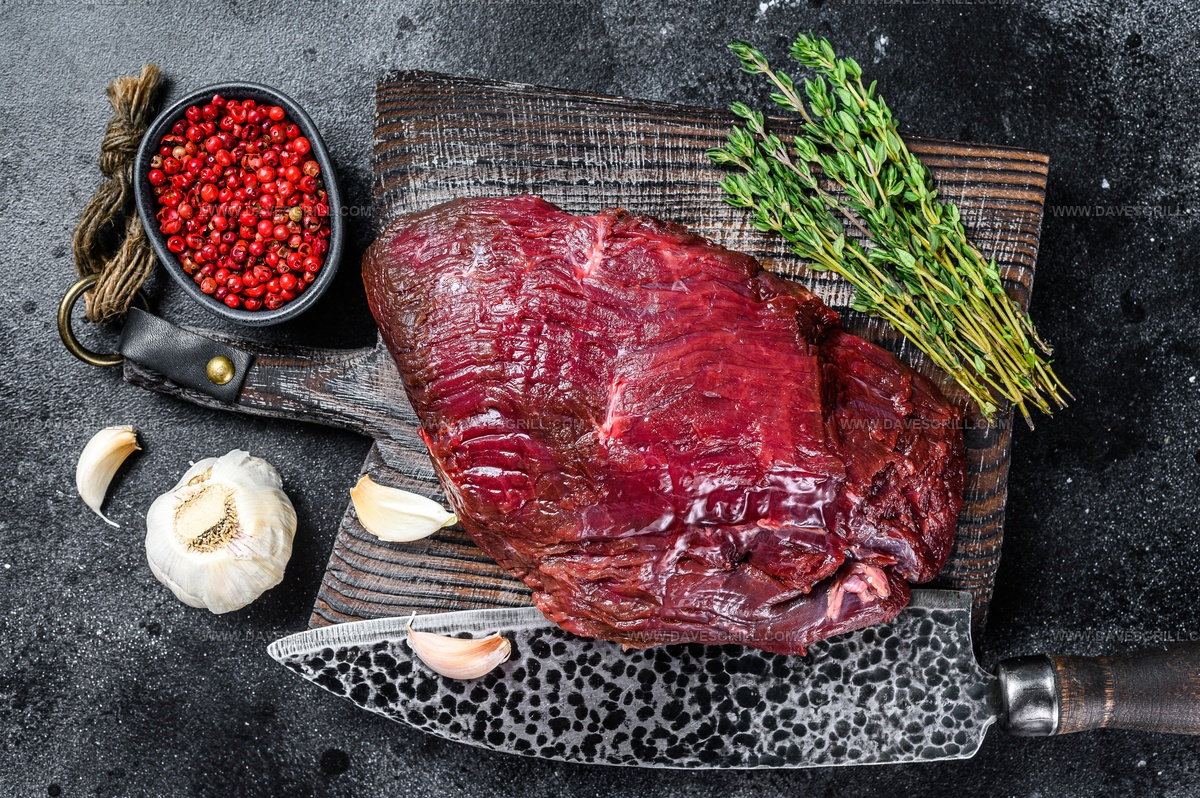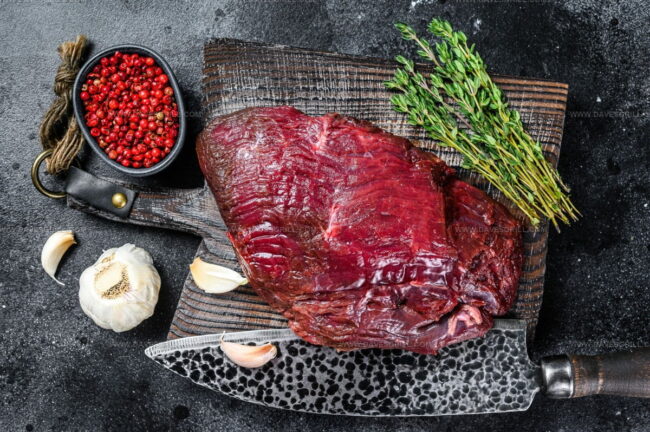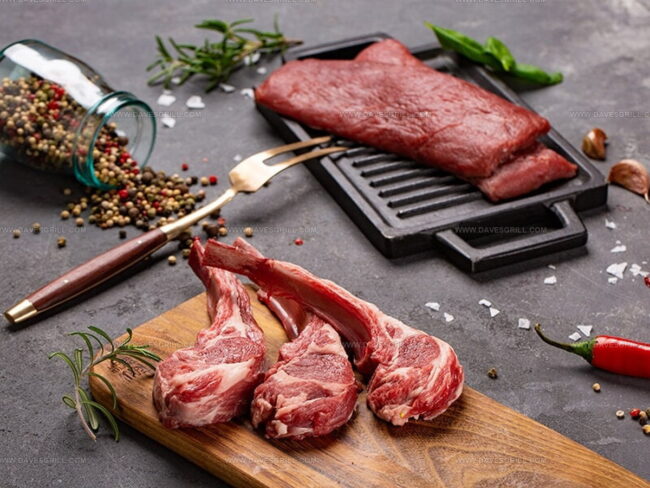What Does Venison Taste Like? Discover the Rich Flavor Profile
Venison, a prized meat from deer, often sparks curiosity among food enthusiasts and culinary adventurers.
Wild game meats carry unique characteristics that set them apart from traditional protein sources.
Hunters and chefs appreciate this lean, nutrient-dense protein for its distinctive qualities and rich cultural significance.
Many people wonder about the flavor profile and potential culinary experiences associated with venison.
Misconceptions and uncertainties frequently surround this alternative meat selection, creating intrigue for those unfamiliar with its nuanced attributes.
Comparing venison to more common meats can help unravel its sensory mysteries and gastronomic potential.
Understanding the factors that influence its taste will provide valuable insights into this remarkable protein source.
Dive into the delectable world of venison and uncover its delightful culinary secrets.
What Is Venison?
Meat from wild animals like antelope or deer goes by the name venison.
Game animal types change depending on location.
North America might include bear, wolf, or elk meat under this label, while South American versions often mean cougar, feral pig, or deer meat.
Venison actually covers all edible parts from wild animal meat, even internal organs.
People most commonly use this word to talk about deer meat.
Someone suggesting you try venison is probably talking about deer meat.
Language roots show this word comes from Latin word venor, meaning to hunt or chase.
Venison carries a special flavor profile.
Wild meat contains subtle herb and acorn notes with a firmer texture compared to standard meat.
Spicy and minty seasonings complement this meat nicely, making it perfect for cold weather meals.
Wild meat might seem scary for some people, but it offers a delicious option for those wanting something different.
Careful preparation can create a meal that pleases even picky eaters.
Flavor of Venison
Venison meat has a strong natural taste that might seem scary at first.
Meat flavor can change quite a bit and feels slightly wild.
Some people enjoy its flavor, while others find it less appealing.
Meat cuts from deer seem extra soft and taste milder than beef.
Cooks can use several methods like soaking in marinades and cooking through roasting, frying in a pan, grilling, or baking.
Wild animal meat differs from standard beef or pork with a more chewy feel.
Hunters who eat deer meat often say it reminds them of cattle meat but with a stronger taste and hint of sweetness.
Such similar flavors might come from their matching diet of green plants, corn, and nuts, which explains the unique corn-like texture many notice.
Deer meat feels more firm and less wet compared to typical meat, creating an experience like eating a more concentrated beef version.
Wild vs. Farmed Venison: Flavor and Nutrition Differences
Wild and farmed venison both come from deer, but they taste different and have their own unique nutrition profiles.
If you want a stronger, earthy taste and a leaner option, wild venison is a good choice.
If you prefer a gentler flavor and softer texture, farmed venison might be better for you.
Both offer healthy protein and are great red meat alternatives:
Wild Venison
Has a bold, gamey flavor because wild deer eat a natural diet of plants, leaves, and berries. The meat is usually leaner, lower in fat, and higher in certain nutrients like iron and omega-3s.
Farmed Venison
Tastes milder and is often more tender, since farm-raised deer are fed a controlled diet and have less stress. The meat has a little more fat and can be slightly higher in calories.
Venison Health Benefits
Deer meat comes with several health perks:
How to Make Venison Less Gamey
Here are helpful tips to reduce that strong wild taste in deer meat:
Spices Are Up To You
Hunters and chefs know wild meat sometimes tastes strong.
Adding special seasonings helps smooth out unusual meat flavors.
Smart cooks mix different dried plant leaves to make game dishes taste better.
Good choices include sweet marjoram, piney rosemary, earthy sage, and soft thyme.
These plant mixtures help create delicious meals with deer meat that everyone will enjoy.
Try Different Marinades
Soaking meat in liquid helps break down tough muscle parts and adds more taste to deer meat.
Keep the meat in the cool part of the fridge while it sits in the marinade.
Deer meat without much fat can soak up extra calories from these liquid mixtures.
Smart cooks use sharp liquids like vinegar, wine, lemon juice, or tomato juice to help make the meat more tender and easy to chew.
Add Extra Fats
Gamey meat stays juicy when rubbed with different types of fat.
Smear butter, margarine, bacon fat, oil, and sweet or sour cream over the meat to keep it moist and add extra flavor to your roast.
Make Meat Tender By Pounding It
Slice meat carefully with a sharp knife into small chunks.
Break down the meat until it looks like fine crumbs.
Remove Any Hairs
Cleaning off extra hair helps make game meat taste better by getting rid of weird flavors.
Use a cloth dipped in vinegar to wipe away those unwanted hairs.
Is Venison Healthier Than Beef?
Deer meat looks like beef but tastes a bit different.
People notice a strong, wild flavor when they first try it.
Cooks often use special tricks to make the meat taste better.
Herbs and spices can quickly change how deer meat feels in your mouth.
Mixing deer meat with fruits like oranges or sweet berries also helps balance its unique taste.
Health experts like deer meat for many reasons.
Compared to beef, deer meat has much less fat.
Someone watching their diet might pick deer meat as a smarter protein choice.
Deer meat contains more good things like vitamins B6 and B12.
Minerals such as iron and selenium make this meat especially healthy.
People who care about nutrition find deer meat packed with helpful nutrients.
How to Choose Good Venison
Meat quality matters when picking venison. Look for pieces with dark coloring and packed-together texture.
Fat should appear white and solid. Skip any sections with yellow or greasy-looking fat.
Pick meat based on your cooking plans.
Small cuts taste wonderful in pates or light fry. Burger and sausage makers can use ground venison meat.
Ways to Serve Venison
Some people find venison meat tricky to cook because of its firm texture.
Ground venison works well in quesadillas or hamburgers if whole cuts seem too tough.
Slow cooking methods like crockpots can help make deer meat more tender.
Pan-roasting offers a delicious way to experience venison's unique flavor for first-time eaters.
Mixing fresh deer meat with chopped herbs, butter, garlic, and potatoes creates a memorable meal.
Deer meat shines in slow-cooked dishes like soups and stews where simmering helps break down muscle fibers.
Jerky lovers might enjoy venison jerky as a tasty alternative to traditional beef snacks.






Emily Lawson
Content Creator & Culinary Specialist
Expertise
Education
Oregon Culinary Institute
Diploma in Culinary Arts
Focus: Emphasis on farm-to-table cooking, sustainable practices, and the fusion of global flavors with traditional grilling methods.
Emily Lawson is the content creator at Daves Grill, turning tasty ideas into clear, easy recipes. Based in Portland, she trained at the Oregon Culinary Institute and loves cooking with fresh, seasonal ingredients, especially grilled veggies and global flavors.
Emily mixes food writing with hands-on cooking to bring you recipes that feel fun, not stressful. Her goal is to make every dish simple, flavorful, and worth coming back to. Together, she and Dave serve up real food, one recipe at a time.